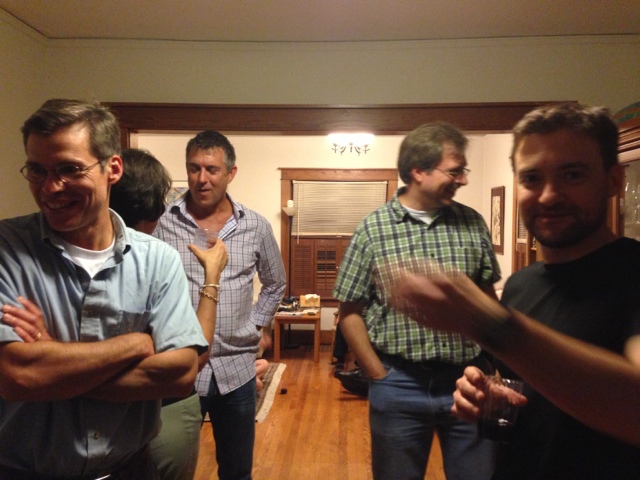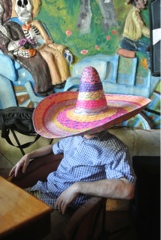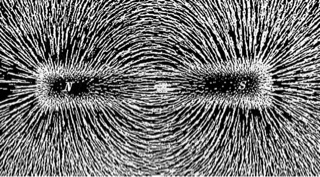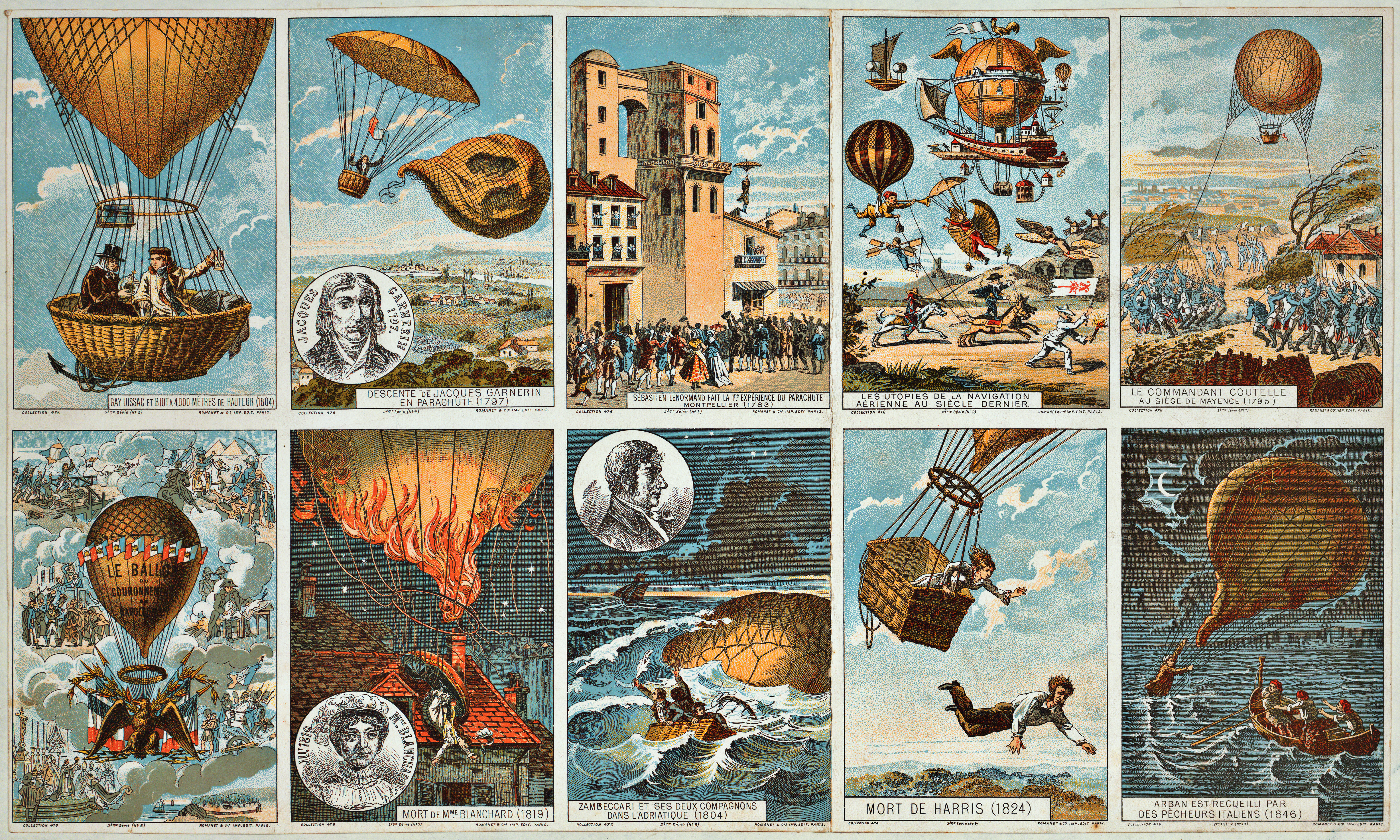The work shop is half over and I feel like I'm in the middle of a masters class on the radiation belts, how to manage an entire satellite mission, and how to think about budgetary/more business like issues. When I decided to become a physicist I never thought about the fact that I might have to be a manager, a low level accountant, writer, software engineer, teacher, travel agent ect.
The week started with flying to the land of Van Allen (Iowa university). I think I touched ground in 5 states before landing in Iowa (the 6th state for the day). All the flights were well worth it though!
Even through I might not have been sure which airport I was in by the end of the day, I knew I must be in the right place as they had an exhibit of the history of flight and included early ballooning efforts.
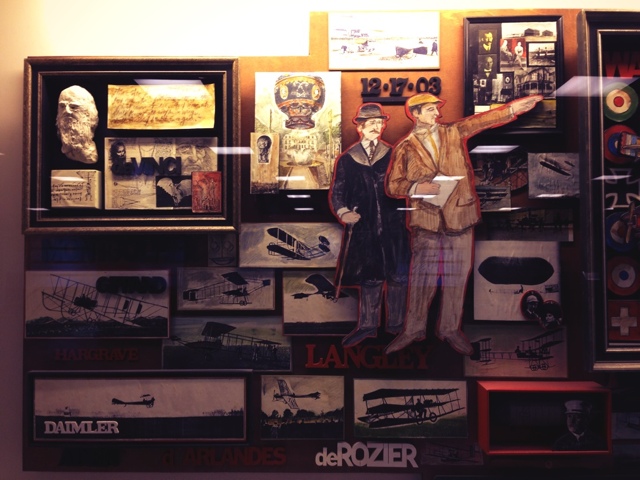
The university is beautiful and the entire downtown area is filled with art. But you can't miss that Van Allen lived and worked here. Apparently some people got a cab ride and the driver had given rides to Van Allen and had some great stories about this amazing man.

The entrance to the hall has a very nice exhibit about all the research done in the physics lab, but also a good sized exhibit on the explorer missions and the radiation belts.
All the sessions have been in the Van Allen Hall which seems very fitting. We've had some great discussions about the January 17th event (a big one for BARREL), the March 17th event, EMIC waves (as we look towards the future), and of course planning for this next years campaign.
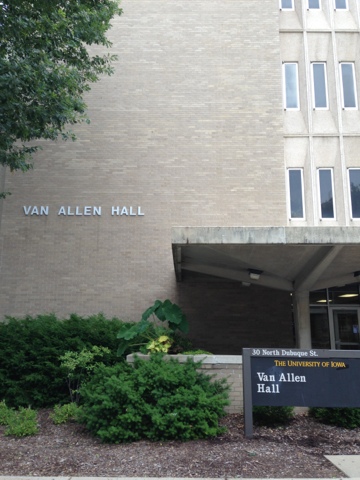
One thing that has surprised me as I've worked with the Van Allen teams is that they have been able to adapt the software on the satellite to make changes on the fly and improve compression rates as we see what's important and what's interesting so that we can gather more data. For example, last year during our campaign we started running into the problem of possibly overwriting interesting data. They have a set amount of storage space up on the satellite and it can take a lot of time to send the data back to Earth, so once that storage space has been completely full, it starts overwriting the oldest data. This year though there are plans to send up a new command to the satellite which would allow us to say "Keep this bit of data it's important" and then if we use up all the storage space we can protect the interesting stuff and make sure it doesn't get overwritten.
We have been working very hard, but we have gotten a chance to have a bit of fun. Craig, the PI of the EMFISIS team, and his wife were kind enough to invite us all to their home for nibbles and drinks. Of course the table ornament was a Lego version of one of the Van Allen Probes.
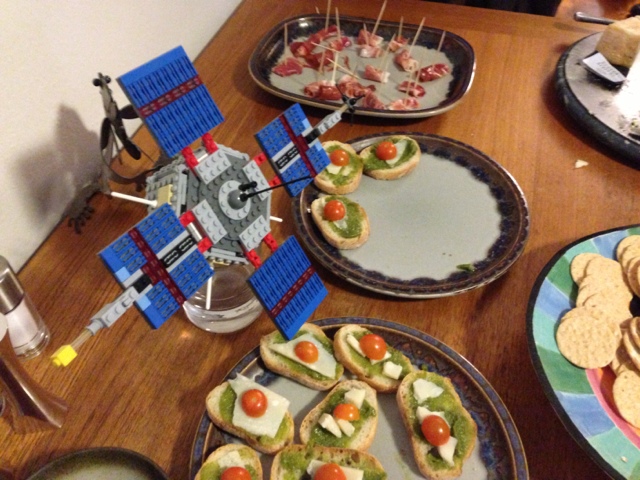
One of the reasons I love this field is that there are great and kind people in it. These "out of the office" get together are always so incredibly useful. When I was a younger student It was great to see that these big names in the field were just like anyone else. It also gave an opportunity to approach and talk with them in a more relaxed setting. It's amazing how many collaborations and funding opportunities come out of the after workshop dinners. It's also interesting to see how much easier it is to think in a more relaxed setting. I've seem the start to a good number of projects come from doodles on napkins. This is something that you can only get at in-person meetings and one of the reasons that they are just so important. Skype or Google hangouts, well very useful, just don't allow for the luxury of walking away, grabbing a cup of coffee, and then catching back up for dinner where the conversation easily goes from "hows life", to "what did you think about so-and-so's presentation", to "hey we could easily answer this with your code and my data". Before you know it you have a whole new project and some interesting answers to share with the field.
This has been a great meeting thus far and I can't wait to see what I'm going to learn today, and who I'm going to meet to collaborate with!
